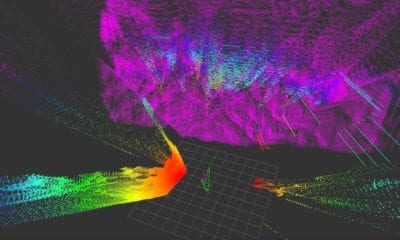
News
Data Aggregators in Cellular IoT Applications
The Internet of Things, or IoT, refers to the billions of devices, vehicles, and home appliances around the world that are now connected to the internet, all collecting and sharing data. While IoT offers us opportunity to be more efficient in how we do things, saving us time, money, its implementation is not without its costs. One of the greatest threats to the IoT comes from the strain put on the global system of information exchange that the IoT relies upon.
The Cellular Internet-of-things (IoT) is envisioned to bring a myriad of transformative opportunities for mobile network operators across various fields. Nevertheless, the support of IoT applications requires solutions tailored to their unique requirements compared to human-type traffic. For instance, many of these applications rely on the deployment of a large number of low-cost battery-powered IoT devices, with each device generating low-rate sporadic traffic. In addition, some IoT objects are located deep indoors, e.g., utility meters.
For these reasons, recent enhancements of cellular releases have recognized energy-efficiency and coverage as key pillars toward realizing large-scale IoT communications. One approach to help support cellular IoT is the deployment of data aggregators, which act as relays, connecting IoT devices to the cellular network.
A research paper by Ghaith Hattab and Danijela Cabric at the Department of Electrical and Computer Engineering, University of California, Los Angeles, explores the usage of data aggregators in Cellular IoT applications. Titled, “Performance Analysis of Uplink Cellular IoT Using Different Deployments of Data Aggregators“, the aim of this publication is to study different deployment strategies of data aggregators using stochastic geometry. Specifically, data aggregators are compared in terms of;
- The average power consumption, which affects the lifetime of IoT devices.
- The maximum coupling loss (MCL), which determines the coverage performance that can be supported by the network.
The authors of the paper present different deployment strategies of data aggregators, highlighting their use cases. These deployments include
- Randomly deployed aggregators or small cells,
- Randomly selecting a single or multiple devices as cluster heads, and
- Optimizing the location of the aggregator to be at the centroid of the cluster, where the aggregator can be aerial or terrestrial.
Simulative Testing
The researchers tested their strategy by creating a system that required the e deployment of a cluster of devices over an area. The cluster could have a small radius or area or a set larger area – each configuration would have a different task assigned to the cluster of devices. When the area of scattered devices is small, this amounts to sensors and machines having a similar task; for example, deploying sensors in a farm for pest control, inside an infrastructure or a warehouse for monitoring, etc. When devices are scattered have large distances between them, this amounts to random deployment of sensors over large geographical areas.

Three different deployment strategies are studied
Different strategies for the deployment of these devices were tested by the researchers for their field simulation that were studied with mathematical models which were derived specifically for IoT systems. Their deployment strategies were;
- Random deployment:
In this deployment strategy, aggregators are randomly deployed in any give region without utilizing prior knowledge on the locations of the devices.
The device that is supposed to communicate with IoT connects to the nearest aggregator. This deployment strategy can be interpreted as a cellular operator densifying a coverage area with data aggregators or utilizing existing small cells. - Cluster-interior deployment:
In this deployment strategy, clusters of aggregators are deployed in already operational clusters. Each device connects to its nearest aggregator. Such deployment strategy can be interpreted as:
- Randomly assigning a device to act as a cluster head, or
- The environment is densely occupied by obstacles that hinder deploying the aggregator at a desired position.
- Centroid deployment:
In this deployment strategy, the locations of all devices are used to position the aggregator at the point that minimizes the sum of distances squared.
Results
The researchers validate the theoretical results returned by their deployed aggregators via Monte Carlo simulations. The researchers tried 1,000 different iterations – each with different locations of devices. They use lines and markers to denote the theoretical expressions and the simulations, respectively.
With varying Power Control Factors (PCF), the researchers developed curves of power consumption and device lifetime. Their theoretically developed graphs agreed very closely with the field simulations, confirming their mathematical models.
Citation: Hattab, G., Cabric, D., Performance Analysis of Uplink Cellular IoT Using Different Deployments of Data Aggregators. arXiv e-prints arXiv:1812.01751. https://arxiv.org/abs/1812.01751























